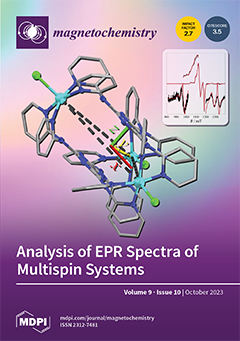Open AccessEditor’s ChoiceArticle
Polymer-Assisted Synthesis, Structure and Magnetic Properties of Bimetallic FeCo- and FeNi/N-Doped Carbon Nanocomposites
by
Gulsara D. Kugabaeva, Kamila A. Kydralieva, Lyubov S. Bondarenko, Rose K. Baimuratova, Dmitry Yu. Karpenkov, Ekaterina A. Golovkova, Pavel N. Degtyarenko, Nina D. Golubeva, Igor E. Uflyand and Gulzhian I. Dzhardimalieva
Cited by 1 | Viewed by 1204
Abstract
Bimetallic FeCo and FeNi nanoparticles attract much attention due to their promising magnetic properties and a wide range of practical applications as recording and storage media, catalytic systems in fuel cells, supercapacitors, lithium batteries, etc. In this paper, we propose an original approach
[...] Read more.
Bimetallic FeCo and FeNi nanoparticles attract much attention due to their promising magnetic properties and a wide range of practical applications as recording and storage media, catalytic systems in fuel cells, supercapacitors, lithium batteries, etc. In this paper, we propose an original approach to the preparation of FeCo- and FeNi/N-doped carbon nanocomposites by means of a coupled process of frontal polymerization and thermolysis of molecular co-crystallized acrylamide complexes. The phase composition, structure, and microstructure of the resulting nanocomposites are studied using XRD, IR spectroscopy, elemental and thermal analysis, and electron microscopy data. The main magnetic characteristics of the synthesized nanocomposites, including the field dependences and the ZFC-FC curves peculiarities, are studied. It is shown that the obtained FeCo/N-C nanocomposites exhibit exchange bias behavior at low temperatures. In turn, FeNi/N-C nanocomposites are ferromagnetically ordered.
Full article
►▼
Show Figures





